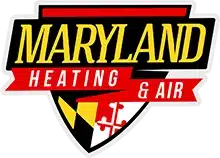Winter is almost here, and you may be considering installing a new home furnace. Remember, a good furnace not only ensures a warm and comfortable environment but also contributes to energy efficiency and cost savings.
Naturally you’ll want to ensure that your system will be reliable, efficient, and dependable, consequently choosing the correct home furnace becomes paramount. To assist you, we’ll cover some of the key aspects such as types, efficiency, size, features, cost, installation, and maintenance.
Which System to Go For A Heating Furnace?
When considering a heating furnace for your home, the choice largely depends on factors like your home’s size, local climate, energy efficiency preferences, and the availability of fuel types. Here are some popular types of heating furnaces that are suitable for residential use:
1. Gas Furnaces
Gas furnaces are extremely popular, as they are known for their efficiency and effectiveness, especially in colder climates.
They work by burning natural gas to produce heat, with the heated air distributed throughout your home by means of ductwork.
While they are highly efficient, cost-effective, and fast heating, they do require a natural gas connection and regular maintenance for safety.
2. Electric Furnaces
These systems utilize electric heating elements to heat air, which is then circulated throughout the home. They are simpler and often cheaper to install than gas furnaces, with no need for venting or a gas line, and are safe to operate.
However, due to high electricity prices, operational costs are higher, and they are therefore best suited for areas with milder winters.
3. Oil Furnaces
While oil furnace systems are less common, they produce more heat per BTU than other furnace types and are a viable option where natural gas isn’t available.
They produce heat by burning heating oil, which is stored in a tank, so they require on-site storage of oil, proper maintenance, and are subject to fluctuating oil prices.
4. Propane Furnaces
These work in a similar fashion to gas furnaces but use propane, stored in an external storage tank. Thus, they are suitable for rural areas without natural gas service and are efficient with powerful heating.
5. Hybrid Furnaces
These systems combine a gas furnace with an electric heat pump, switching between the two depending on temperature.
They are energy-efficient, particularly in climates with mild to moderate winters, with cost-effective operation, but are expensive to install and more complex.
Factors to consider before purchasing Home Furnace
1. Size and output
The furnace should be properly sized for your home. An oversized or undersized furnace can lead to inefficiency, higher costs, and comfort issues. An oversized furnace cycles on and off more frequently, reducing efficiency and lifespan, while an undersized furnace may struggle to heat your home adequately. That is why a professional assessment is recommended to determine the right size for your home.
2. Efficiency ratings
High-efficiency furnaces can significantly reduce energy bills. Look for the Annual Fuel Utilization Efficiency (AFUE) rating. A higher AFUE means more efficiency and lower fuel costs. Modern furnaces often have an AFUE rating of 90% or higher, making them significantly more efficient than older models.
3. Cost
Consider both the upfront installation costs and the long-term operating costs. While high-efficiency furnaces may have a higher upfront cost, they can lead to significant savings in energy bills. It’s important therefore to balance initial costs with long-term savings.
4. Climate
The effectiveness of a furnace type will vary based on your local climate. Choosing the right furnace for your home involves balancing factors like energy efficiency, fuel availability, climate, and cost. So here again, it’s advisable to consult experienced heating and cooling professional to assess your specific needs and recommend the most suitable furnace type for your home.
5. Environmental impact of your furnace
Newer models are not only more efficient but also have lower emissions, making them a more eco-friendly choice. Look for the more environmentally friendly furnaces, especially those with higher efficiency ratings, and lower your carbon footprint.
6. Installation and maintenance
Proper installation by a qualified professional is essential for safety and efficiency. Regular maintenance is also crucial for safety and efficiency. This includes filter changes and annual check-ups and will prolong the life of your furnace and maintain its efficiency. Always add in the cost of a regular maintenance contract. It will more than pay for itself over time.
The Bottom Line
Heating your home uses more energy and costs more money than any other system in your home, making up around a quarter of your utility bill.
So, choosing the right furnace will not only keep you warm and comfortable but also contribute to lower energy bills and a reduced carbon footprint. Remember, professional advice and regular maintenance are key to ensuring the longevity and efficiency of your home heating system.
Stay warm and cozy this winter with the perfect home furnace!


 855-410-TECH(8324)
855-410-TECH(8324) APPLY FOR FINANCING
APPLY FOR FINANCING